Ever wondered if Mother Nature tucked away some remedies for diabetes in her vast bounty? You’re not alone. With the rising interest in holistic health and natural therapies, many are turning their gaze to time-tested home remedies that our ancestors swore by.
Diabetes mellitus, a condition that affects millions globally, isn’t left out of this natural healing conversation.
In this post, we will explore some Natural Home Remedies For Diabetes Mellitus.
Remember, while nature’s pantry may offer support, it’s always wise to consult with healthcare professionals before making any changes to your regimen. Welcome to the world of natural solutions!
Guava and Guava Leaves
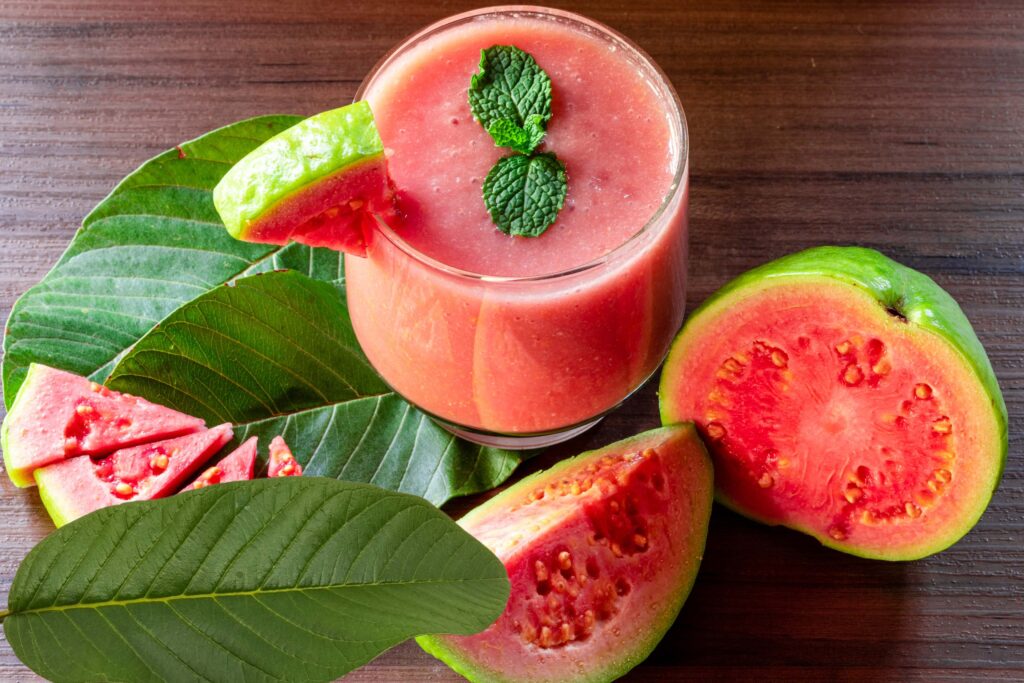
Guava is not just a delicious fruit; it’s also revered in several countries like Taiwan, India, Japan, and China for its potential health benefits. But did you know that both guava and its leaves might help with diabetes management?
Scientific Evidence:
Historically, Indian Ayurveda and ancient Chinese Medicine have pointed out the benefits of guava and its leaves for treating diabetes mellitus. Here’s what science says:
- Quercetin: Guava leaves contain a flavonoid called quercetin, which can reduce blood sugar levels.
- Multiple Beneficial Compounds: Guava has over 13 different substances that could be beneficial against diabetes. This includes a mix of flavonoids, fructose, pectin fiber, and various minerals and vitamins like magnesium, zinc, manganese, niacin, and vitamin C.
- Overall Health Boost: The abundant vitamin C in guava is a powerful antioxidant. It not only boosts immunity but also potentially reduces the risk of heart diseases. Some studies also indicate that certain compounds in guava might lower cholesterol levels.
How to Use Guava for Diabetes?
It’s pretty simple! To harness the benefits of guava:
- Eat the Fruit: Include guava in your regular diet. However, remember to peel off the skin before consuming. It’s believed that the skin might not be suitable for diabetic patients.
- Guava Leaves Tea: One of the best ways to get the benefits of guava leaves is to prepare a tea.
Step-by-Step Guava Leaves Tea Preparation:
- Choose the Leaves: Pick some fresh guava leaves.
- Boil: Place the leaves in a pan and pour 1 1/2 cups of fresh water over them. Boil the mix until the water reduces to half.
- Strain and Cool: After boiling, turn off the heat and strain out the leaves. Let the tea cool down to room temperature.
- Drink Up: Consume the cooled tea. For potential benefits, drink two to three cups daily.
Prickly Pear Cactus Juice
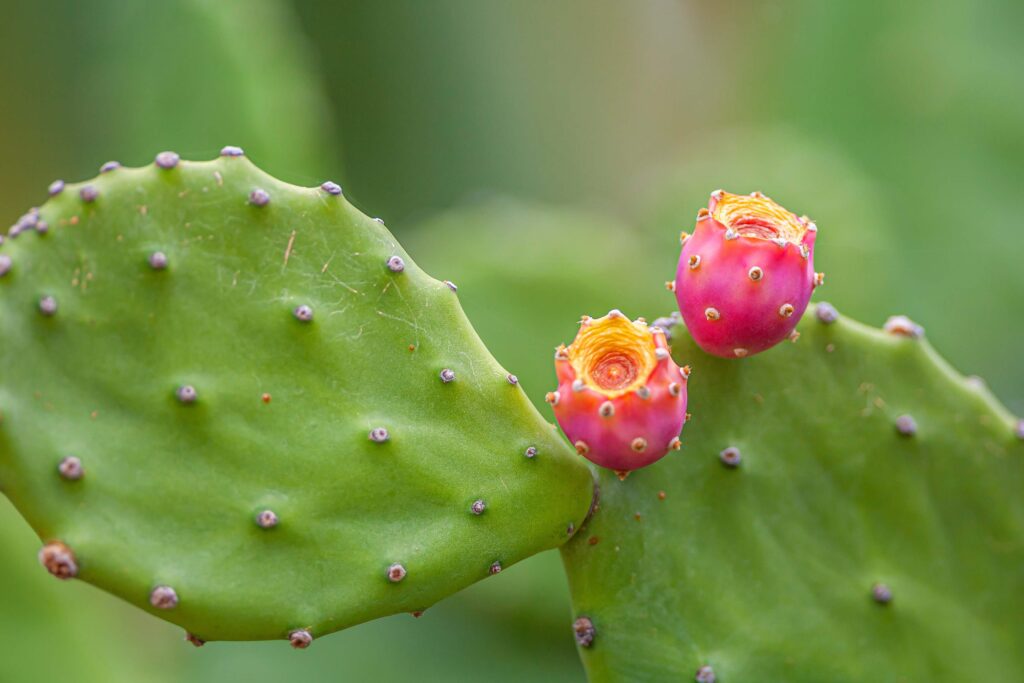
In a world overflowing with natural remedies, the prickly pear cactus stands tall (pun intended!). Not only is this unique plant a visual treat with its spiky appearance, but it’s also a storehouse of health benefits. Especially for those grappling with diabetes, this cactus offers a refreshing route to managing the condition. Curious to learn how? Let’s whip up a simple and healthy juice!
Why Prickly Pear Cactus Juice?
Prickly pear cactus, or nopal as it’s often called, is loaded with fiber. This dietary fiber works like a charm by slowing down how quickly your body absorbs sugar. This means a steadier glucose level for you. Less rollercoaster, more steady road! This special juice doesn’t just stop at managing diabetes. It’s a vitamin powerhouse, boasting of vitamin C, E, and A. You’ll also find essentials like calcium, iron, and unique compounds like quercetin and carotenoids. The cherry on top? It’s armed with anti-viral and anti-inflammatory powers. Talk about a holistic health potion!
Step-by-Step Guide to Making Pear Cactus Juice:
Gather Your Ingredients:
- A ½ peeled and chopped cucumber
- A ½ cup of julienned nopal (this is the edible part of the prickly pear cactus)
- Juice from 1 lime
- 1 cup of water
Step 1: Let’s Blend:
Dump all your ingredients into a blender. This includes your cucumber, nopal, lime juice, and water.
Step: 2 Mix It Up:
Switch on that blender and blend away until you get a smooth, consistent mixture. Imagine all the goodness merging together!
Step: 3 Pour and Enjoy:
Once blended to perfection, pour the juice into your favorite glass.
Optional: If you’re in the mood for a chilly treat, especially on a hot day, toss in some crushed ice.
Best Time to Drink:
To get the most out of this health elixir, consider having it in the morning. Think of it as your morning routine’s new best friend.
There you have it – a simple, homemade prickly pear cactus juice recipe that’s brimming with health benefits. Remember, while it offers several advantages, always consult with your healthcare professional before making significant changes to your dietary routine. Happy juicing!
Is Amiclear For Diabetes A Scam?>>
Bilberry Plant
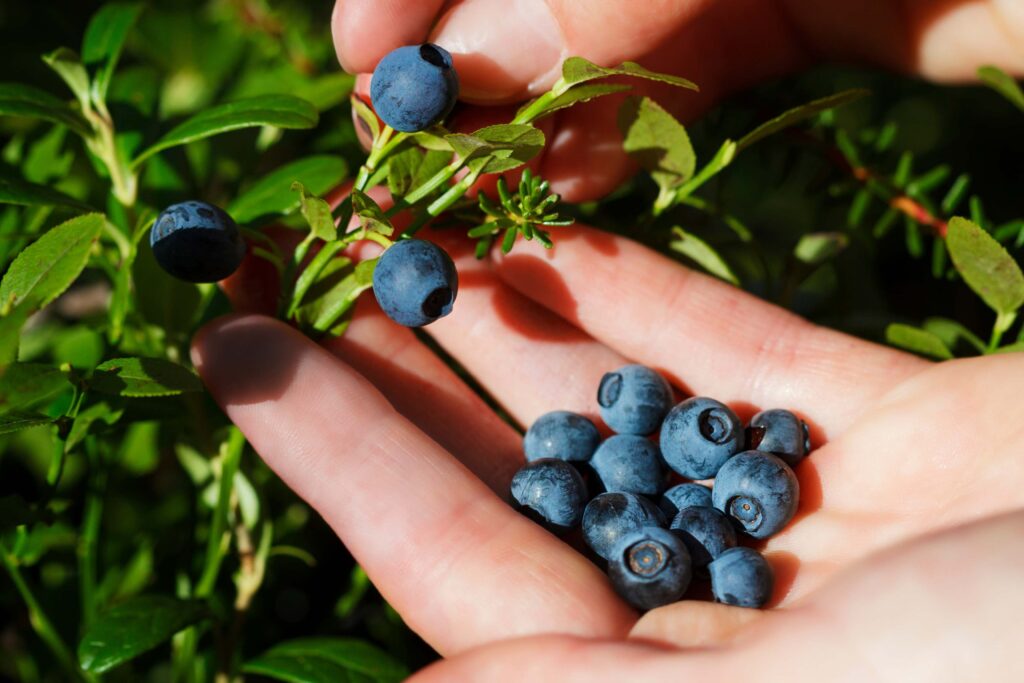
The natural world is packed with countless treasures that cater to our health needs, and the Bilberry plant is undoubtedly one of these gems. Let’s unravel the mystique around the Bilberry plant and its health benefits, especially for those battling with blood sugar challenges.
Bilberry and Blood Sugar: The Connection
A study conducted at the University of Montreal, Canada, found that the lowbush bilberry plant has significant potential benefits for blood sugar regulation. In just six days, there was a noticeable 15 to 20 percent improvement in glucose levels. But what makes the Bilberry plant so special?
Why Bilberry?
Bilberry contains a compound called anthocyanin, which plays a pivotal role in preventing and treating ulcers and, more prominently, diabetes. It works by managing insulin in our bodies, thereby helping to keep blood sugar in check.
Furthermore, the bilberry plant is a powerhouse of antioxidants. From hydroxycinnamic acids, phenolic compounds, catechins, and flavonoids to vitamins like vitamin C and A, and proanthocyanidins. These antioxidants shield our body from damage inflicted by free radicals, unstable molecules that can harm our cellular structure.
Harnessing Bilberry’s Benefits: A Few DIYs
Bilberry Vinegar
- Take one quart of apple cider vinegar and mix it with one cup of dried bilberries.
- Let it sit for a month.
- After a month, strain out the bilberries.
- Voila! You have your Bilberry vinegar ready. Drizzle a tablespoon of it over salads or bread. Not only is this delicious, but it’s also beneficial!
Bilberry Syrup
- You can use dried or fresh bilberries.
- When turned into syrup, it retains its antioxidant and anti-inflammatory properties.
- This syrup aids in boosting our immune system, fighting against free radicals, and protecting against harmful bacteria and viruses.
- Enjoy it directly, drizzle over your morning pancakes, or stir into your favorite tea.
Bilberry Tea
- Take a tablespoon of dried bilberry and place it in a mug.
- Pour hot water over it and cover.
- Allow it to steep for about 10 minutes.
- Once done, enjoy your therapeutic tea! Aim for three to four cups daily for the best results.
Precautions
Like all good things, the Bilberry plant should be consumed in moderation:
- For Expecting and Nursing Mothers: Always consult a health specialist before adding bilberries to your diet. Excessive amounts might interfere with iron absorption.
- Those on Medication: Particularly if you’re on anticoagulants like warfarin or have a bleeding disorder, approach bilberries with caution.
- Monitor Blood Sugar: If you’re using bilberries as a remedy for diabetes, regular blood sugar monitoring is vital. If any allergic reactions are noticed, it’s best to stop using bilberries and consult a healthcare professional.
In essence, the Bilberry plant offers an exciting avenue for those looking to manage their blood sugar naturally. However, always blend traditional wisdom with modern-day insights by consulting your healthcare provider before making any dietary changes. Happy healing!
Drumstick Leaves
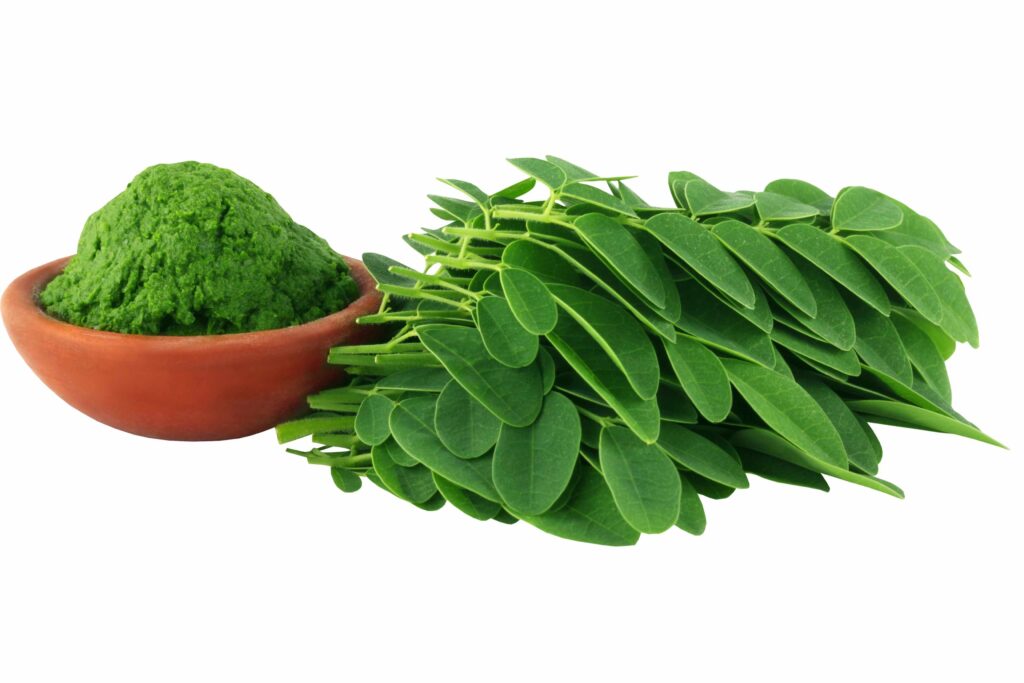
Hidden among nature’s bounty, drumstick leaves stand as a testament to the wonders that Mother Earth bestows upon us. These humble leaves, often overlooked, are packed with medicinal properties that have made them an integral part of traditional remedies across different cultures. Especially when it comes to diabetes, drumstick leaves have shown promising potential. So, let’s dive into the world of drumstick leaves and learn how to harness their benefits.
Why Drumstick Leaves?
These green wonders are not just any ordinary leaves. Packed with valuable nutrients, drumstick leaves are a powerhouse of antioxidants. Their anti-inflammatory properties stand out, not only boosting metabolism but also aiding in the detoxification of our body and blood. This, in turn, can help regulate blood sugar levels, making them an ideal natural remedy for those battling diabetes.
Step-by-Step Guide to Making Drumstick Leaves Juice:
Step 1: Source the Best:
Begin by ensuring you’re using fresh, tender drumstick leaves. Remember, the fresher the leaves, the more potent they’ll be.
Step 2: Prepping the Leaves:
Thoroughly wash the leaves to get rid of any dirt or contaminants.
Remove any stems or impurities. You want only the leafy greens.
Step 3: Into the Mixer:
Place the clean drumstick leaves in a mixer grinder. If you don’t have a mixer grinder, a regular blender should do the trick.
Step 4: Blend It Up:
Add a bit of water to the mixer. Not too much; just enough to facilitate smooth blending.
Blitz until you get a consistent, smooth mixture. Think of it as making a green smoothie.
Step 5: Extracting the Goodness:
Using a fine strainer, strain the blended mixture. This helps separate the pulp from the juice. If you prefer a little pulp for added fiber, you can skip this step.
Collect the bright green juice in a cup or container. This is the concentrated goodness of drumstick leaves.
Step 6: Serving Suggestions:
Every morning, on an empty stomach, drink half a cup of this drumstick leaves juice.
If the taste feels a bit strong, consider diluting it with some water or even mixing it with other juices for flavor.
Step 7: Monitor and Celebrate:
Over time, with regular consumption, you may observe improvements in your blood sugar levels and overall diabetic condition. Don’t forget to keep track of cholesterol levels as well, as drumstick leaves can have a positive impact on that too.
Points to Remember:
- Consistency is Key: As with all natural remedies, patience and consistency are crucial. It’s not an overnight miracle but a gradual process.
- Stay Informed: While drumstick leaves are beneficial, it’s vital to keep monitoring your blood sugar levels. Always consult with a healthcare professional about any dietary changes or if you notice any adverse effects.
- Pair with a Balanced Diet: For the best results, ensure you’re also maintaining a balanced diet and a healthy lifestyle. Drumstick leaves juice should be a complement to a holistic health approach.
In essence, drumstick leaves offer a unique and natural way to help manage diabetes. So, the next time you spot these leaves, remember they’re not just another green but a potential ally in your health journey. Here’s to natural wellness!
Diabetes Pills that Cause Weight Loss: Unraveling the Potential of Amiclear>>
Fenugreek
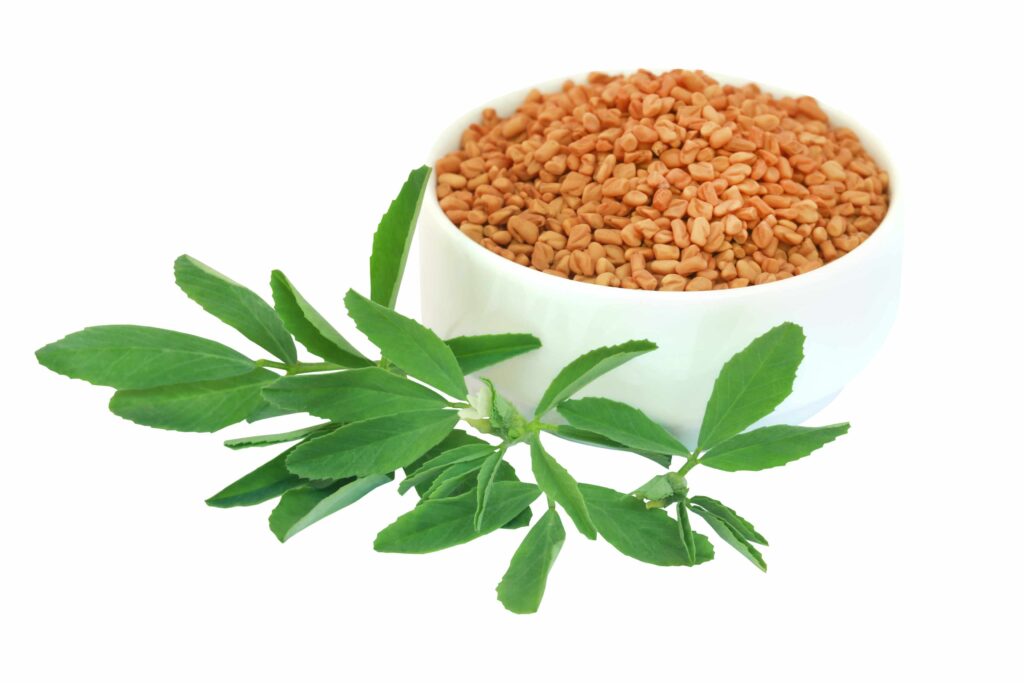
Have you ever pondered the potential power hidden within tiny seeds? Fenugreek, a commonly used spice in many kitchens, might just be one of the most effective weapons against the persistent nemesis known as diabetes mellitus. The little seeds aren’t just for flavor – they’re packed with properties that can help battle elevated blood sugar levels. Let’s take a deeper dive into the magic of Fenugreek and how it can be incorporated into your daily routine.
Why Fenugreek?
Fenugreek is a wonder spice with ancient roots in natural medicine. What makes it a hero in the diabetes fight? Fenugreek seeds have a reservoir of soluble fiber, which plays a pivotal role in managing blood sugar levels. Additionally, these seeds stimulate cells in the pancreas, potentially bolstering insulin production. Scientific studies have also indicated that Fenugreek can enhance glucose tolerance and reduce fasting glucose. Let’s delve into the ‘how-to’ of harnessing the power of these marvelous seeds.
Guide to Using Fenugreek for Diabetes Management:
Method 1: Fenugreek Water Magic
Gather Your Ingredients:
- Fenugreek seeds – 4 tablespoons
- Freshwater – 1 cup
The Overnight Soak:
- In a bowl, place the fenugreek seeds.
- Pour in the water, ensuring all seeds are submerged.
- Let it sit overnight, allowing the seeds to imbibe all the water.
Morning Ritual:
- Come morning, grind the soaked seeds. This can be done using a mortar and pestle or a grinder.
- Using a sieve or muslin cloth, strain the mixture, separating the water from the crushed seeds.
The Drink of Health:
- Drink this fenugreek-infused water.
- For the best results, continue this ritual every morning for a minimum of two months. Watch and see how your body reacts positively!
Method 2: Fenugreek Seed Chew
Prepping Time:
- Fenugreek seeds – 2 tablespoons
- Freshwater
Overnight Adventure:
- Just like in the previous method, take the seeds in a bowl and cover them with water.
- Let the seeds luxuriate and soften overnight.
Morning Munch:
When you wake up, the first thing to reach for is this bowl. Chew on the softened fenugreek seeds. Don’t just swallow – take your time and chew them properly.
Do not discard the water; drink it down. Think of it as a fenugreek shot to kickstart your day!
Consistency is Key:
Make this a morning habit, consuming on an empty stomach for maximum benefit. Give it a few months and observe the changes in your health.
A Few Pro Tips:
- Fresh is Best: Always ensure the fenugreek seeds you use are fresh and free from any contaminants.
- Watch and Monitor: While fenugreek is a natural remedy, it’s essential to monitor your blood sugar regularly to ensure you’re on the right track.
- Consultation: Before integrating any new remedy into your regimen, especially if you’re on medication, always consult with a healthcare professional.
In conclusion, nature continually surprises us with its remedies, and fenugreek is a shining example of this. Simple yet effective, these little seeds can be your ally in the fight against diabetes. Embrace nature’s pharmacy, and may health always be on your side!
Bitter Gourd
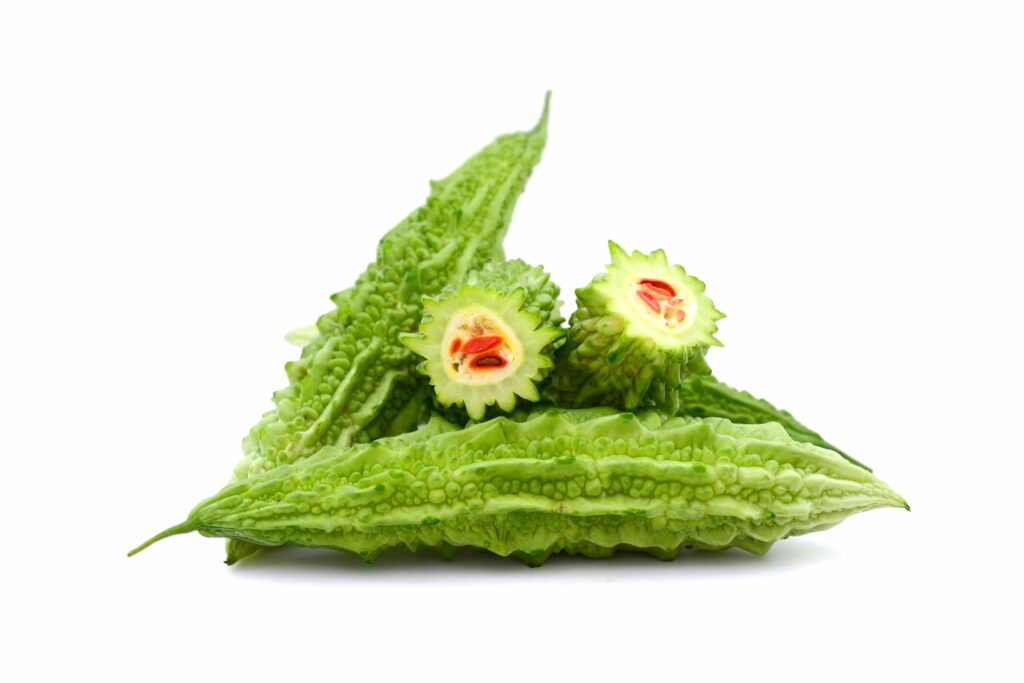
Ah, the humble bitter gourd! Despite its unappealing name and infamous taste, it’s revered in many cultures for its medicinal properties, particularly when it comes to managing type 2 diabetes. But what makes this green vegetable a health superhero? Beyond its dietary fiber, which can stabilize blood sugar levels, bitter gourd boasts a unique compound, charantin, proven to have anti-diabetic properties. And that’s not all – this bumpy green wonder is packed with vital vitamins and minerals that bolster your body’s defenses against infections.
Ready to unlock the potential of the bitter gourd? Let’s explore a few easy-to-follow methods to incorporate it into your daily routine.
Method 1: Bitter Gourd Juice
Ingredients:
- Bitter gourds – 4 to 5
- Water (optional)
Steps:
- Preparation: Begin by washing the bitter gourds. Use a peeler to strip away the outer skin.
- Deseeding: Slice the gourd open and remove all the seeds.
- Juicing: Crush the deseeded pieces until they turn into a paste.
- Extraction: Place your paste on a sieve and press to extract all the juice. If it’s too bitter, consider diluting it with some water.
- Drink Up: For best results, drink this juice every morning on an empty stomach.
Method 2: Sauteed Bitter Gourd
Ingredients:
- Bitter gourd, chopped into pieces
- Ghee (clarified butter) – as required
- Pan
Steps:
- Prepare: After washing the gourd, chop it into small pieces.
- Cook: In a pan, heat some ghee. Once hot, add the bitter gourd pieces.
- Saute: Cook the pieces until they’re soft and slightly crispy.
- Serve and Enjoy: Incorporate this sauteed dish into your daily meals.
Method 3: Bitter Gourd Tea
Ingredients:
- Dried bitter melon pieces
- Water – 1 cup
Steps:
- Boil: In a pan, bring the water to a boil.
- Infuse: Add the dried bitter melon pieces to the boiling water.
- Steep: Let it simmer for a few minutes to ensure the essence of the bitter melon gets infused.
- Strain and Serve: Use a sieve to strain the tea and then pour it into a cup.
Final Thoughts:
Bitter gourd can be a versatile ingredient in your kitchen. Don’t limit yourself to these methods; explore different recipes. For instance, there are delightful curries and stir-fries that prominently feature bitter gourd. With regular consumption, this green veggie might just work wonders in managing your diabetes.
A few pointers to remember:
- Taste Matters: Bitter gourd is, well, bitter. But its health benefits are worth the taste. Over time, you might even grow to like it!
- Fresh is Best: Always pick fresh bitter gourds. They should be firm to the touch and bright green.
- Monitor Regularly: While natural remedies can be effective, it’s crucial to regularly monitor your blood sugar levels.
- Consultation is Key: Everyone’s body is different. Before making any significant dietary changes, it’s always wise to consult with your healthcare provider.
In essence, while bitter gourd might not win any popularity contests based on taste alone, its potential health benefits are undeniable. Embrace this green powerhouse and let it assist you in your journey to better health!
Indian Lilac ( Neem)
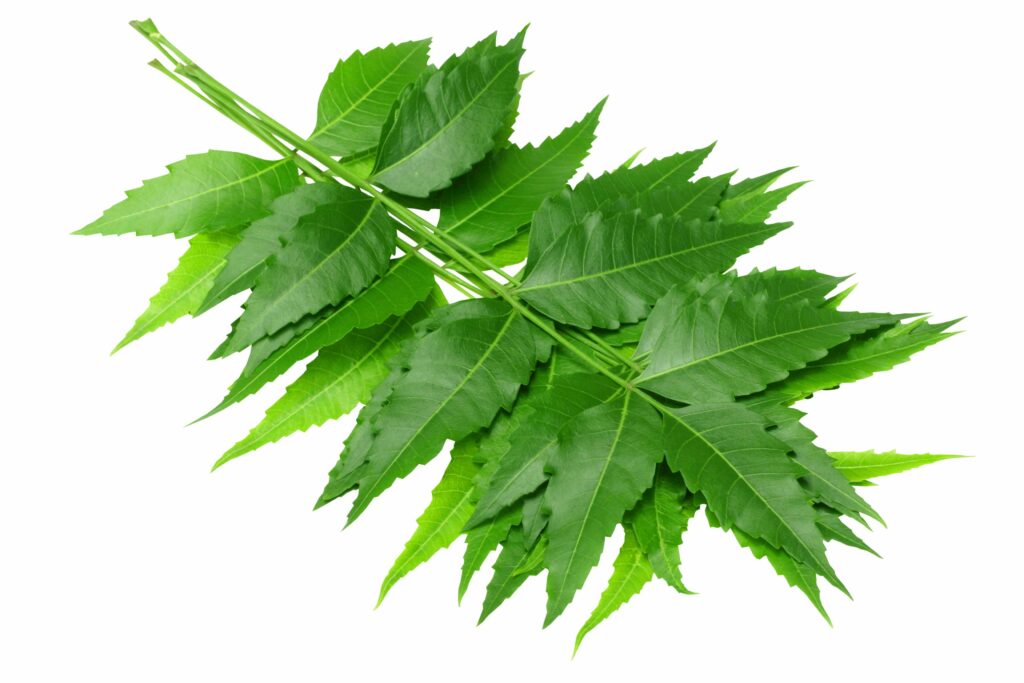
Indian Lilac, often referred to as Neem, is a versatile tree native to India. Revered in traditional medicine for its myriad benefits, the neem tree is a powerhouse of healing properties. Among its many virtues, it holds a special place in the world of natural treatments for diabetes. Its antifungal, antibacterial, and antihyperglycemic effects make it an invaluable ally in this fight. Beyond these, neem leaves can boost insulin receptor sensitivity in the body, ensuring better utilization of insulin. Additionally, it’s known to improve blood circulation by dilating blood vessels, further aiding the body’s response to blood sugar.
For those keen on harnessing the power of neem to tackle diabetes, here’s a simple guide to some of the most effective methods:
Method 1: Neem Juice
Ingredients:
- Fresh Neem leaves – A handful
Steps:
- Preparation: Begin by thoroughly washing the fresh neem leaves.
- Crushing: Once clean, use a mortar and pestle or a grinder to crush the leaves.
- Extract: Strain the crushed leaves to collect the juice.
- Dosage: Take a tablespoon of this fresh juice.
- Consumption: Every morning, on an empty stomach, drink this juice. Making it a daily routine can help in effectively reducing blood sugar levels.
Method 2: Chewing Neem Leaves
Ingredients:
- Tender Neem leaves – 8 to 10
Steps:
- Cleanse: Wash the neem leaves under running water to remove any impurities.
- Chew: Pop them in your mouth first thing in the morning.
- Routine: Continue this practice daily. Over time, along with other dietary and lifestyle changes, you’ll likely notice a difference in your blood sugar management.
Method 3: Neem Leaf Powder Drink
Ingredients:
- Dried neem leaves powder – 1 to 2 teaspoons
- Water – 1 glass
Steps:
- Mix: Take a glass of water and mix the neem powder into it. Stir well to ensure the powder is thoroughly dissolved.
- Drink: Consume this neem-infused water. It’s best taken in the morning, and you can choose whether or not you want to do it on an empty stomach.
- Repeat: Incorporate this drink into your daily routine for consistent results.
Points to Ponder:
- Quality Matters: Always ensure that the neem leaves or powder you’re using are free from contaminants and are sourced from a reliable place.
- Bitter Truth: Neem, in all its forms, is inherently bitter. While this might be off-putting for some, remember that this bitter quality is part of what gives it its antidiabetic properties.
- Consult First: Before integrating neem or any other natural remedy into your routine, especially if you’re on prescribed medications, it’s essential to consult with a healthcare provider.
Indian Lilac or Neem, with its rich history in traditional medicine, has been a trusted companion for many seeking natural health solutions. Its potential in managing diabetes is just a sliver of what this remarkable tree offers. As with all things, consistency is key. Incorporate neem into your daily regimen, monitor your blood sugar levels regularly, and, with time, you may find nature’s own remedy making a world of difference in your health.
Holy Basil
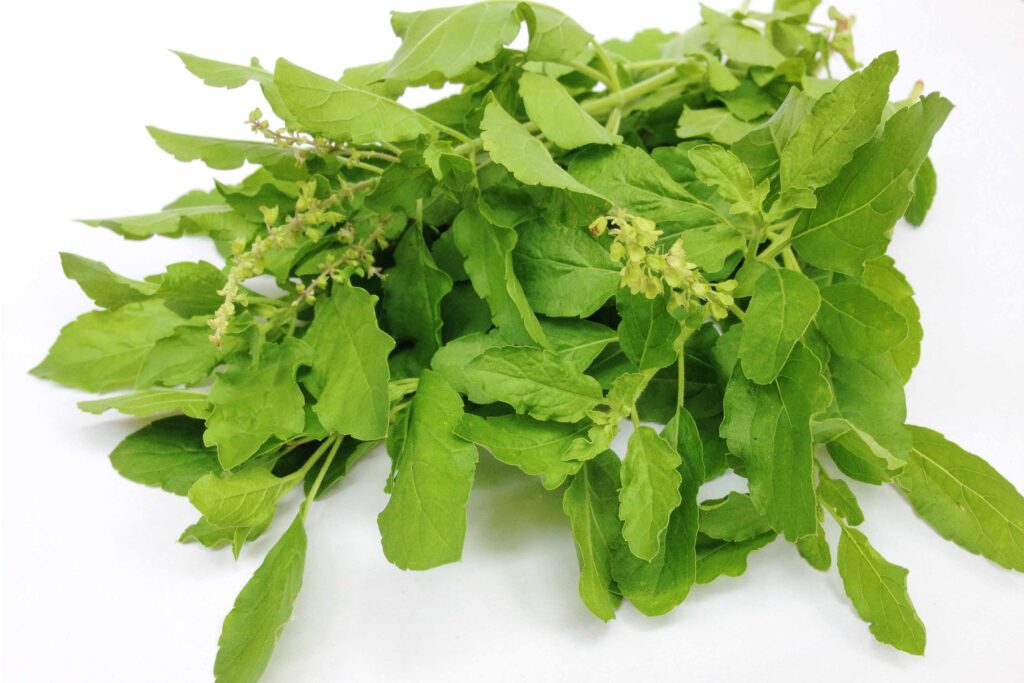
Holy Basil, also known as Tulsi, is more than just a fragrant herb used in many Indian households and temples. It’s a green treasure trove of health benefits. Revered in Ayurveda, this plant brings forth a bouquet of properties that make it a medicinal marvel: it’s antibacterial, antiviral, antifungal, antidiabetic, and the list goes on. With its proven ability to reduce blood glucose levels, it’s no wonder many turn to this herb for diabetic relief.
Below is a guide that unveils the various ways you can utilize Holy Basil for better health, particularly for managing diabetes:
Method 1: Simple Consumption
Ingredients:
Fresh basil leaves: 2-5
Procedure:
- Rinse and Ready: Start by thoroughly washing the fresh basil leaves to ensure they’re free from any contaminants.
- Chew and Relish: Place the clean leaves in your mouth and chew them slowly.
- Routine Matters: Make this a morning ritual, preferably on an empty stomach. Regular consumption can significantly assist in managing diabetes while also harnessing the other benefits of the herb.
Method 2: Basil Elixir
Ingredients:
- Fresh basil leaves
- Choice of Liquid: Water, vegetable juice, or fruit juice
Procedure:
- Extracting Goodness: Crush a handful of fresh basil leaves, ensuring you extract at least one teaspoon of its potent juice.
- Blend and Boost: Add this basil extract to your choice of liquid, whether it’s simple water, a vegetable juice, or even a fruit juice. Mix well.
- Drink to Health: Consume this mix every morning on an empty stomach. If you’re feeling adventurous, you can even take the basil juice directly. However, mixing it might be preferable to neutralize the strong taste.
- Consistency Counts: Like all natural remedies, it’s essential to make this a daily habit for a few months for noticeable results.
Method 3: The Herbal Trinity
Ingredients:
- Basil leaves: 5
- Neem leaves: 5
- Bael leaves: 5
Procedure:
- A Trio of Benefits: All three herbs – basil, neem, and bael – are renowned for their medicinal properties, especially in balancing blood sugar levels.
- Blend and Bind: Crush these leaves together to achieve a unified paste. Ensure it’s smooth and devoid of any chunky leaf bits.
- Consume and Continue: Every morning, consume this paste on an empty stomach. Given the concentrated nature of this remedy, it offers a potent solution for managing diabetes.
Points to Ponder:
- Quality Over Quantity: Always ensure that the basil leaves or any other herb you’re using are free from pesticides and are sourced reliably.
- Taste Alert: Holy Basil has a distinct taste – a blend of sweetness with slight bitterness. Some might find it strong, but remembering its health benefits can make it palatable.
- Consultation is Key: As with any natural remedy, especially if you’re currently on prescribed medications or have other health conditions, it’s essential to consult with a healthcare provider before incorporating these methods into your routine.
The power of nature is often underestimated. Holy Basil or Tulsi stands as a testament to the healing that nature offers. With its remarkable range of medicinal properties, it provides an accessible and natural solution for those grappling with diabetes and various other health concerns. By integrating it into your daily routine, you not only manage your sugar levels but also embrace a holistic approach to well-being. Embrace the serenity and potency of Holy Basil, and embark on a journey to better health.
Indian Gooseberry (Amla)
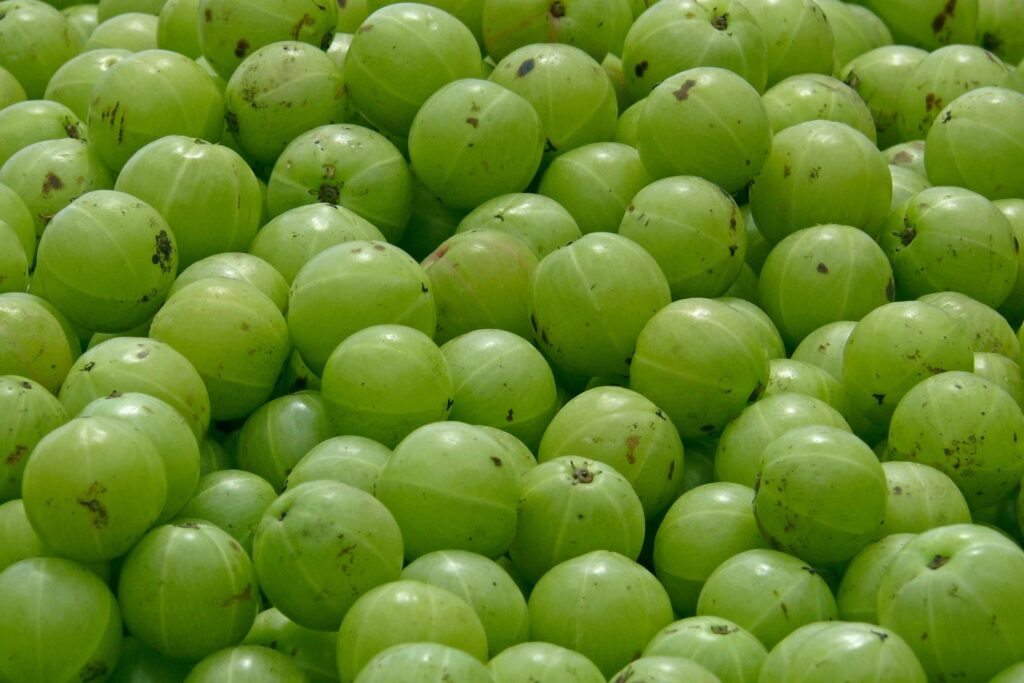
Indian Gooseberry, better known as Amla, isn’t just another fruit. This green, tangy marvel is loaded with Vitamin C and a host of other nutrients. Its diverse health benefits have made it a staple in traditional Indian medicine, Ayurveda. Particularly, its effectiveness in regulating blood sugar levels makes it a valuable remedy for those dealing with diabetes.
If you’re considering natural avenues to manage your diabetes, Amla should be high on your list. Here’s a detailed guide on how you can incorporate this superfruit into your routine:
Method 1: Simple Amla Elixir
Ingredients:
- 2-3 Amla (Indian Gooseberries)
- 1 cup of water
Procedure:
- Prep the Amla: Wash the gooseberries. Cut them into pieces and carefully remove the seeds.
- Blend and Extract: Transfer the seedless Amla pieces into a blender. Blend until you get a smooth paste. Use a clean cloth or a sieve to strain the paste, extracting the juice.
- Consume with Care: Mix 2 tablespoons of the freshly extracted Amla juice with a cup of water. Drink this on an empty stomach every morning to manage your blood sugar levels.
Method 2: Amla Meets Bitter Gourd
Ingredients:
- 1 tablespoon Amla juice
- 1 cup bitter gourd juice
Procedure:
- Blend the Duo: Combine Amla juice with bitter gourd juice.
- Drink Up: Consume this potent mix daily for the best results. The combination amplifies the blood sugar-reducing properties, offering you a powerful natural remedy.
Method 3: Amla Water
Ingredients:
- 1 ½ tablespoon Amla powder
- 1 glass of water
Procedure:
- Stir and Settle: Mix the Amla powder in water until it’s well dissolved.
- Drink to Health: Consume this Amla-infused water regularly to maintain balanced blood sugar levels.
Method 4: A Power-Packed Blend
Ingredients:
- 1 teaspoon Amla powder
- ½ tablespoon fenugreek seeds powder
- ½ tablespoon turmeric powder
- ½ glass of water
Procedure:
- The Mixing Bowl: In a bowl, mix together Amla powder, fenugreek seed powder, and turmeric powder.
- Craft Your Drink: Add this mixture to half a glass of water and stir well.
- Morning Magic: It’s best consumed in the morning on an empty stomach. Stick to this regimen daily for maximum benefits.
Additional Tips:
- Raw and Direct: If you’re someone who can handle the tangy taste, you can also consume Amla directly. Eating raw Amla is one of the most straightforward ways to tap into its benefits.
- Quality Matters: Always ensure that the Amla you’re using, whether in fruit or powder form, is free from pesticides and contaminants.
- Doctor’s Note: If you’re currently on prescribed diabetes medications, always consult your doctor before adding new remedies. The goal is to complement, not conflict, with your current treatments.
Nature is abundant with remedies, and Amla stands as a testament to this. Its rich nutrient profile and blood sugar-reducing properties make it a natural ally in your battle against diabetes. So, give these methods a try, and let nature’s goodness guide you to better health.
Flaxseeds
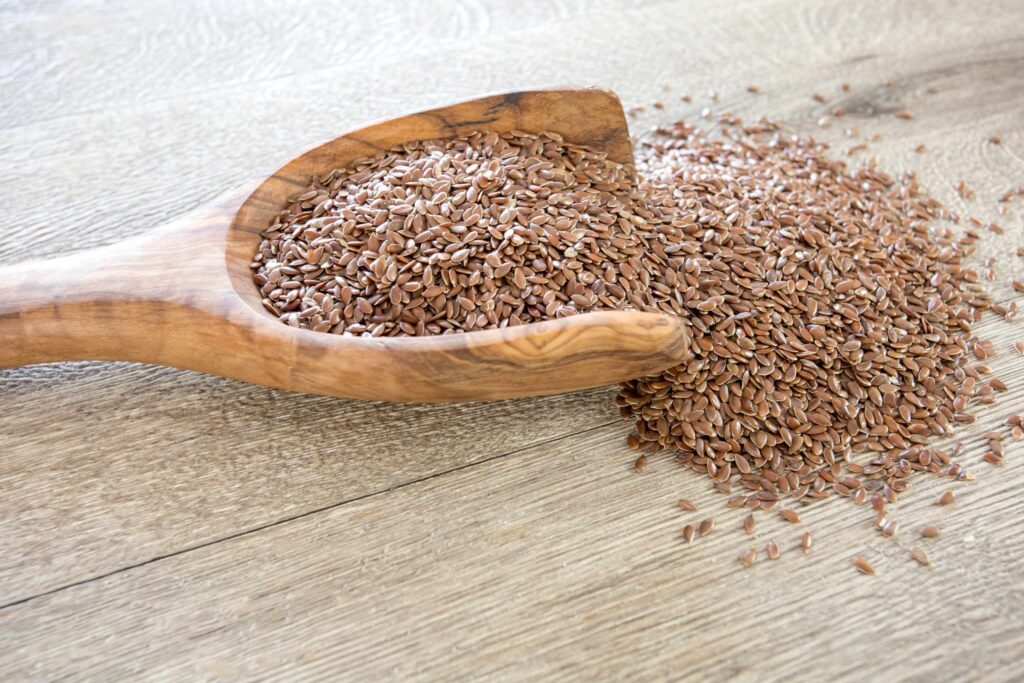
Flaxseeds, often considered a superfood, have been gaining popularity for their myriad health benefits. These tiny brown seeds pack a punch when it comes to nutritional content, especially for those struggling with diabetes. Rich in proteins, fibers, and plant compounds known as lignans, flaxseeds act as antioxidants and play a pivotal role in stabilizing blood sugar levels.
If you haven’t yet explored the potential of these miraculous seeds in your battle against diabetes, let this guide introduce you to simple and effective ways to incorporate them into your daily routine.
Why Flaxseeds?
The primary reason flaxseeds are a boon for diabetics lies in their composition. Their high fiber content delays the absorption of sugar in the bloodstream, leading to a more gradual and steady blood sugar level. This makes flaxseeds an excellent dietary inclusion for those wanting to manage and stabilize their blood sugar levels naturally.
Let’s delve into methods to weave flaxseeds into your meals:
Method 1: Flaxseed-Infused Morning Drink
Ingredients:
- 1 tablespoon of flaxseed powder
- 1 glass of milk or water
Procedure:
- Warm it up: Start by gently warming up the milk. If you’re using water, make sure it’s lukewarm for best results.
- Mix it in: Add the flaxseed powder to the warm liquid.
- Stir and Savor: Stir the concoction well, ensuring the powder is dissolved thoroughly. Drink this nutrient-rich liquid every morning with your breakfast.
Method 2: Flaxseed-Powered Breakfast
Ingredient:
1 teaspoon of flaxseed powder
Procedure:
- Morning Mix: As you prepare your breakfast cereal, sprinkle the flaxseed powder on top.
- Stir and Settle: Mix the flaxseed powder into the cereal ensuring even distribution.
- Alternatives: If cereals aren’t your go-to breakfast, fret not. You can seamlessly add flaxseed powder to gravies, soups, or even smoothies. The key is regular intake to consistently benefit from the seed’s blood sugar-controlling properties.
Additional Tips and Suggestions:
- Whole or Ground? While whole flaxseeds can be a crunchy addition to salads, for better absorption of nutrients, it’s advisable to consume them in their ground form. The body can process them more efficiently when they’re powdered.
- Fresh is Best: Grind flaxseeds fresh before use. Over time, pre-ground flaxseeds may lose their potency due to oxidation. A small coffee grinder can do the trick!
- Storage Savvy: Store flaxseeds in a cool, dry place, preferably in airtight containers. Refrigerating them can further extend their shelf life.
- More than Breakfast: While the mentioned methods focus on morning routines, don’t limit flaxseeds to breakfast alone. They can be incorporated into lunch, dinner, or even snacks. Think flaxseed muffins, flaxseed-coated fish, or even flaxseed bread.
- Consultation is Key: As always, if you’re on diabetes medication or any other treatment, consult your healthcare professional before making significant changes to your diet.
Nature often offers profound solutions in tiny packages, and flaxseeds are a prime example. Their potential in diabetes management is backed by research, making them a must-try for anyone looking to control their blood sugar naturally. Whether you choose to sip them with your morning drink or sprinkle them on your meals, these seeds are sure to bring a healthful twist to your daily diet. So, the next time you come across these humble seeds, remember the enormous health benefits they house and make them a regular part of your menu.
Papaya Leaf
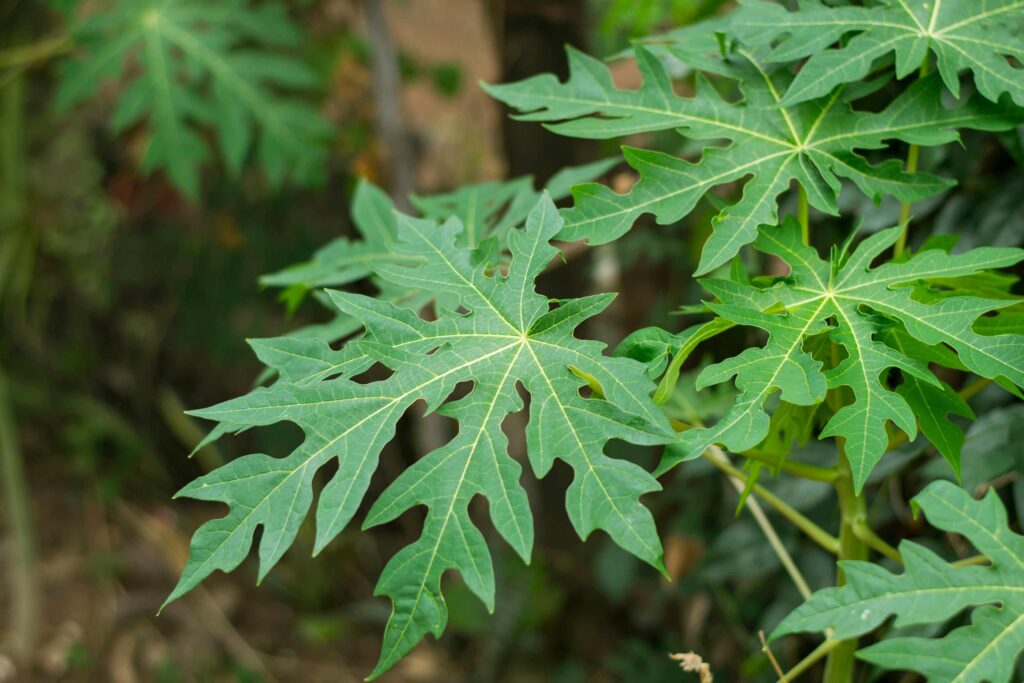
Papaya leaves, though not as popular as the fruit itself, have been studied for their beneficial properties in enhancing insulin sensitivity and overall diabetes management. Research has indicated that they might play a significant role in averting complications that arise due to diabetes, such as fatty liver, kidney damage, and oxidative stress. The richness of various active compounds in these leaves, such as flavonoids, can help in mitigating such complications.
Here’s a beginner’s guide to understanding how to make and consume a simple papaya leaf remedy at home for diabetes.
Why Choose Papaya Leaves?
Before diving into the guide, it’s essential to know why papaya leaves can be a game-changer:
- Improved Insulin Sensitivity: Papaya leaves may enhance the body’s response to insulin, which can help in maintaining a healthier blood sugar level.
- Protection from Complications: The antioxidants present in papaya leaves can help reduce oxidative stress and the risk of other complications associated with diabetes.
Step-by-Step Guide to Making Papaya Leaf Tea:
Ingredients:
- Fresh papaya leaves: 10
- Water: 8 cups
- Equipment:
- A deep pan or pot
- A strainer
- A storage container or pitcher
Procedure:
- Prepare the Leaves: Start by thoroughly washing the papaya leaves to remove any dirt or residue. Once cleaned, chop or tear them into smaller pieces for better extraction of their medicinal properties.
- Boil the Water: In a deep pan, pour the 8 cups of water and place it over medium to high heat. Allow the water to come to a rolling boil.
- Infuse with Papaya Leaves: Once the water has started boiling, gently add the chopped or torn papaya leaves into the pan.
- Boil and Reduce: Continue boiling the leaves in the water. As the mixture boils, you’ll notice the color of the water changing to a greenish hue. Allow it to boil until the quantity is reduced by half, which would be around 4 cups.
- Cooling Time: After boiling, turn off the heat and set the pan aside. Allow the concoction to cool down to a lukewarm or room temperature.
- Strain and Store: Once cooled, strain the liquid to remove the boiled papaya leaves. Transfer this strained liquid to a pitcher or any storage container.
- Serving: Instead of consuming all at once, divide your servings to drink in small doses throughout the day.
Additional Tips:
- Fresh is Best: Always use fresh papaya leaves. Avoid using dried leaves as they might not have the same potency as fresh ones.
- Consistency is Key: For effective results, it’s recommended to drink the papaya leaf tea daily.
- Sweetening the Tea: If you find the taste of the tea a bit strong or bitter, consider adding a natural sweetener like stevia. Remember to avoid sugars or artificial sweeteners as they can counteract the benefits you’re trying to achieve.
- Safety First: Before introducing papaya leaf tea or any new remedy into your daily regimen, it’s crucial to consult with a healthcare provider, especially if you’re on diabetes medications. The goal is to ensure there’s no interaction that might affect your blood sugar levels adversely.
The benefits of papaya leaves in diabetes management may seem surprising to many. However, traditional medicine has long since recognized the potential of such natural remedies. This simple tea not only offers potential blood sugar management but also introduces you to the broader world of natural healing options. Remember, while such remedies can be beneficial, they should ideally complement mainstream diabetes management and not replace it. Always prioritize medical advice and use natural remedies as an additional tool in your health journey.
Lady’s Finger (Okra)
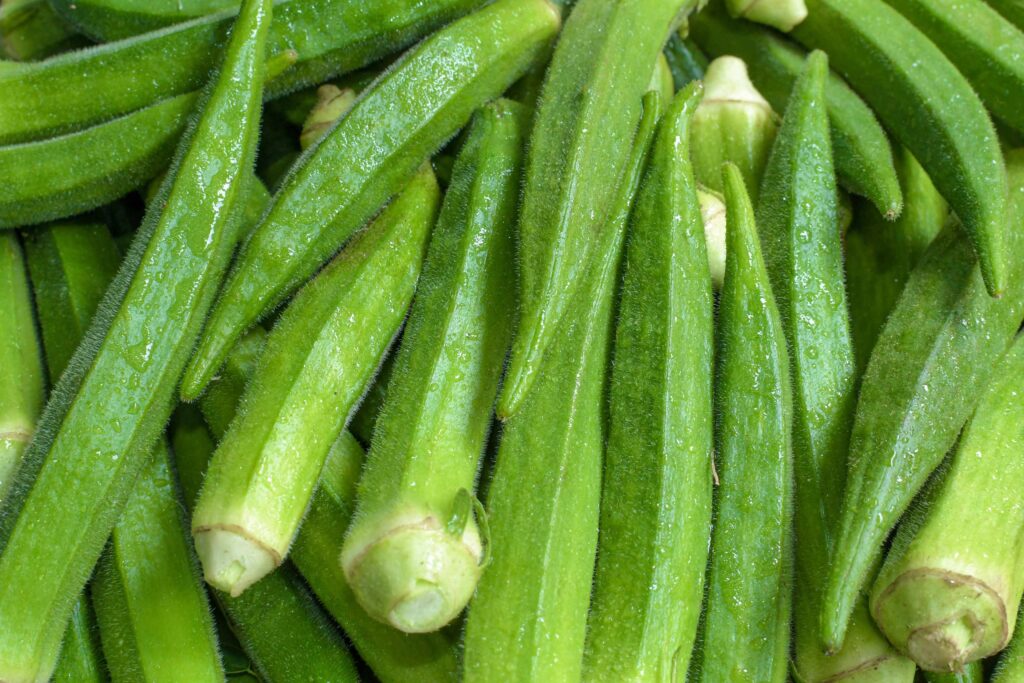
Lady’s Finger, commonly known as okra, is a versatile vegetable that packs a punch when it comes to nutritional benefits. Hailing from African origins, it’s an essential staple in many global cuisines, from gumbo in the American South to bhindi masala in India. What many people might not realize is that beyond its culinary uses, okra offers numerous health advantages, especially for those managing diabetes.
Here’s a straightforward, step-by-step guide to understanding the benefits of okra and how to use it as a natural remedy for diabetes:
Why Choose Lady’s Finger (Okra)?
- Nutrient-Dense: Okra is loaded with vitamins A, C, K, and B6, along with essential minerals like potassium, magnesium, and zinc.
- Rich in Soluble Fiber: The fiber present in okra helps stabilize blood sugar by slowing the rate at which sugar is absorbed from the intestinal tract.
- Alpha-glucosidase Inhibitors: The seeds of okra contain compounds that combat starches converting into glucose, thus aiding in blood sugar control.
- Polyphenolic Molecules: These compounds found in okra help decrease blood glucose levels, further aiding diabetes management.
How to Prepare Okra Water:
Ingredients:
- Fresh okra pods (lady’s finger): 2-4
- Water: 1 glass
Procedure:
- Clean the Okra: Begin by washing the okra pods thoroughly under running water to get rid of any dirt or pesticides.
- Preparation: Once cleaned, cut off the tops (heads) and the tails of the okra pods. Then, make a slit vertically down each pod, dividing each okra into two halves. This will expose the seeds and inner gooey texture, which contains the beneficial compounds.
- Soak the Okra: Place the halved okra pods into the glass of water. Ensure that they are completely submerged.
- Rest and Infuse: Cover the glass with a plate or a lid and let it sit undisturbed overnight. During this time, the water will become somewhat viscous due to the soluble fiber and other beneficial compounds being released from the okra.
- Morning Ritual: The next morning, before eating anything, carefully remove the okra pieces and drink the infused water on an empty stomach. It might have a slightly slimy texture, but that’s where the goodness lies.
- Regular Intake: For optimal results, make this a daily routine. Consuming okra-infused water regularly can help stabilize blood sugar levels.
Additional Tips:
- Incorporate in Meals: Apart from the infused water, you can also include okra in your regular diet. Whether it’s grilled, sautéed, or added to soups and stews, the more you consume, the better!
- Variations: If you find the taste or texture of the okra water challenging, consider blending it with some citrus like lemon or orange to add a refreshing flavor.
The humble okra, with its unassuming green pods, might just be the unsung hero in the realm of natural remedies for diabetes. Its unique combination of essential nutrients and beneficial compounds make it a potential ally in diabetes management. Remember, while okra water and other natural remedies can offer complementary benefits, they should be a part of a holistic approach to diabetes care, including a balanced diet, regular exercise, and adherence to prescribed medications.
Mango Leaves
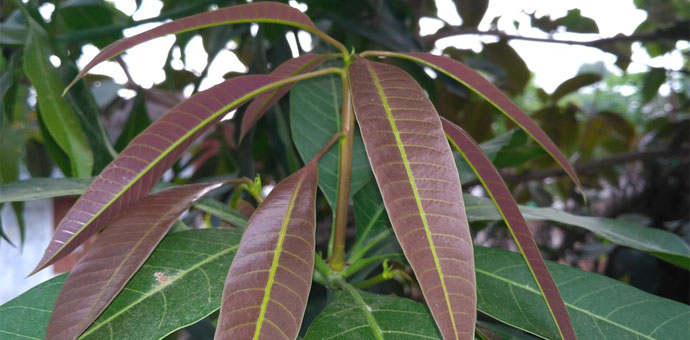
Nature often has a way of surprising us with remedies for ailments, hidden in plain sight. One such gem is the tender leaf of the mango tree. While mangoes are relished for their sweet taste and juiciness worldwide, few are aware of the potent benefits that its leaves offer, particularly in managing diabetes.
So, how do mango leaves help? Primarily, the tender mango leaves contain tannins termed anthocyanidins, which are beneficial in the early stages of diabetes. Moreover, they have a therapeutic role in treating diabetic complications like retinopathy and angiopathy. Here’s how you can harness the power of mango leaves:
Mango Leaf Infusion
Ingredients:
- Fresh mango leaves: 10 to 15
- Water: 1 glass
Procedure:
- Clean the Leaves: Begin by washing the mango leaves thoroughly to remove any dirt or pollutants. It’s essential to ensure the leaves are clean as they will be soaked in water that you will consume later.
- Soak Overnight: After washing, place the mango leaves in a glass of water. Cover the glass with a plate or a lid and let it sit undisturbed throughout the night. This allows the beneficial compounds from the leaves to infuse into the water.
- Morning Consumption: In the morning, strain the water to remove the leaves. On an empty stomach, drink this infused water. To maximize the benefits, avoid eating anything for the next hour.
- Regular Intake: Continue this ritual daily. Over time, regular consumption of mango leaf-infused water can help regulate and manage blood sugar levels.
Mango Leaf Powder
Ingredients:
- Mango leaves
- An airtight container
Procedure:
- Prepare the Leaves: Select a handful of mango leaves. Ensure they are fresh and free from blemishes.
- Sun-drying: Spread the mango leaves on a clean cloth or a tray and place them under direct sunlight. It’s essential for the leaves to dry completely, so leave them out for a day or two, depending on the intensity of the sun.
- Grinding: Once dried, the mango leaves will become crisp. Place them in a blender or grinder and grind them into a fine powder.
- Storage: Transfer the mango leaf powder into an airtight container. Ensure the container is tightly sealed to prevent moisture from entering, which could degrade the quality of the powder.
- Consumption: Before your main meals, such as lunch and dinner, take half a teaspoon of the mango leaf powder. You can mix it in a glass of water or sprinkle it on your food.
- Consistency is Key: To observe noticeable changes in your blood sugar levels, make it a habit to consume mango leaf powder daily.
Important Points to Consider:
- Sourcing: Ensure the mango leaves you’re using are free from pesticides or any chemicals. Organic or naturally grown trees are the best sources.
- Consultation: If you’re on diabetic medication, it’s crucial to consult with your healthcare provider before introducing mango leaves into your regimen. Natural remedies can sometimes interact with prescribed medications.
- Holistic Approach: While mango leaves offer significant benefits, remember that managing diabetes requires a multifaceted approach, which includes a balanced diet, physical activity, and regular health check-ups.
Mangoes are termed the ‘king of fruits’, but it seems the leaves of this royal tree deserve their crown when it comes to health benefits. By integrating mango leaves into your daily routine, you not only take a natural route to manage diabetes but also get one step closer to a holistic lifestyle. Remember, consistency is the key to harnessing the potential benefits of this natural remedy.
Aloe Vera

Aloe vera is not just an ordinary plant. Often dubbed as the “plant of immortality” by ancient civilizations, this succulent has been a centerpiece in natural healing for centuries. Aloe vera’s fleshy leaves are teeming with a gel that holds a rich concoction of at least 75 active compounds. From amino acids to enzymes, from vitamins to minerals, each component plays a pivotal role in human health. For those grappling with diabetes, aloe vera emerges as a potent ally due to its ability to regulate blood glucose and enhance insulin effectiveness.
So, how can you integrate aloe vera into your diabetes management regimen? Let’s delve into some easy-to-follow methods:
Aloe Power Mix
Ingredients:
- Fresh aloe vera gel: 1 teaspoon
- Bay leaves powder: 1 teaspoon
- Turmeric powder: 1 teaspoon
Procedure:
- Extract the Gel: If you have an aloe vera plant at home, slice a leaf open and scoop out the clear gel using a spoon. If not, you can purchase pure aloe vera gel from health stores or online platforms.
- Blend the Ingredients: In a small mixing bowl, combine the aloe vera gel, bay leaves powder, and turmeric powder. Ensure that they are thoroughly mixed.
- Consumption: Take this mixture before your main meals, either lunch or dinner.
- Regular Intake: To witness a difference in your blood sugar levels, ensure you follow this remedy daily. Over time, the combined anti-inflammatory properties of aloe and turmeric coupled with the health benefits of bay leaves can significantly aid in managing diabetes.
Aloe Buttermilk Drink
Ingredients:
- Aloe vera juice: 1 to 2 teaspoons (Note: Aloe vera juice is different from the gel and can be found in health stores.)
- Fresh buttermilk: 1 glass
Procedure:
- Preparation: Pour the buttermilk into a glass or a container.
- Add the Aloe: To the buttermilk, add the specified amount of aloe vera juice.
- Mix Well: Stir the combination thoroughly until the aloe vera juice is evenly distributed in the buttermilk.
- Enjoy the Drink: Consume this solution, ideally during the day.
Things to Consider:
- Consistency: Make this aloe-infused buttermilk a part of your daily routine. Not only will it help in controlling diabetes, but buttermilk’s probiotics also promote a healthy gut.
- Quality Matters: Ensure that you are using pure aloe vera products. Many commercial products contain additives and preservatives that might reduce the efficacy of aloe vera.
Nature offers a plethora of remedies, and aloe vera stands out as one of its prime offerings, especially for diabetes management. By integrating aloe vera into your daily regimen, you are not just harnessing its blood sugar-regulating properties, but also benefiting from its vast array of nutrients. Stay consistent with these remedies, and over time, you might find a noticeable difference in your health. Embrace nature’s power and let aloe vera be a natural companion in your journey towards better health.
Cinnamon
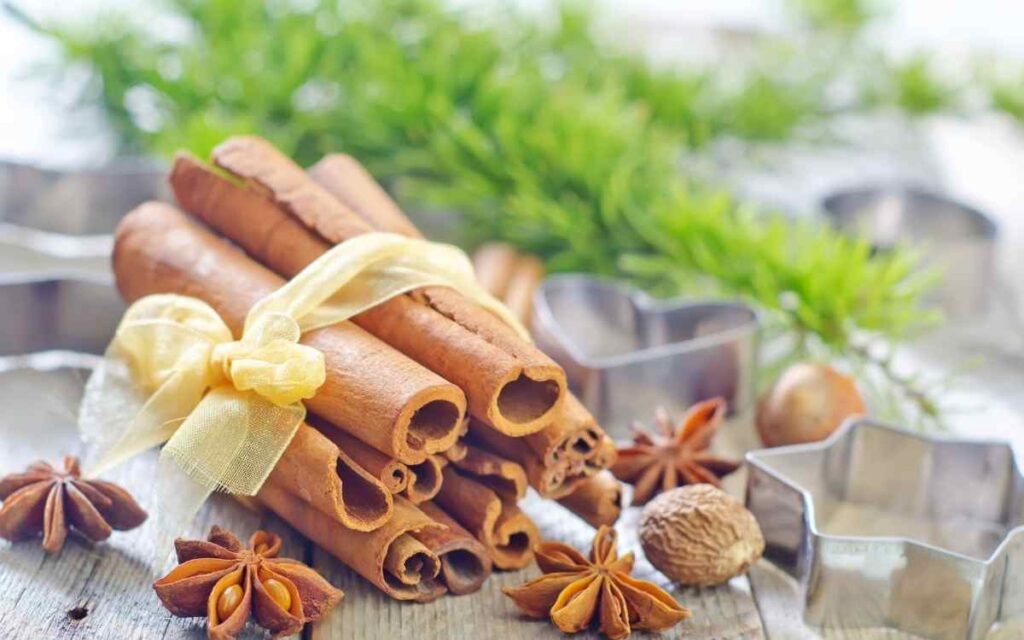
The aromatic bark of the cinnamon tree, commonly known as cinnamon, isn’t just a delightful addition to our pastries and lattes. This fragrant spice has been a staple in ancient medicinal practices for centuries, particularly in traditional Chinese and Ayurvedic medicine. And in the context of modern-day health issues, it stands out as a promising remedy for diabetes, a condition that affects millions worldwide.
Unraveling the Magic of Cinnamon:
Method 1: Cinnamon Infused Water
Ingredients:
- Cinnamon powder: 3 teaspoons
- Water: 1 liter
Procedure:
- Preparation: Begin by boiling one liter of water in a pot or kettle.
- Infuse the Magic: As the water continues to boil, sprinkle in the cinnamon powder. Let it simmer for about 20 minutes. This allows the cinnamon to release its potent compounds into the water.
- Strain and Sip: After simmering, turn off the heat and strain the liquid to remove any residual cinnamon powder. Pour it into a cup.
- Daily Dose: Drink this aromatic cinnamon-infused water daily for maximum benefits.
Method 2: Simple Cinnamon Water
Ingredients:
- Cinnamon powder: 1 teaspoon
- Warm water: 1 cup
Procedure:
- Mix: Take a cup of warm water and stir in the cinnamon powder until it’s well-dispersed.
- Savor: Drink this concoction every day. The warm cinnamon flavor not only benefits your health but also soothes your soul.
- Sprinkle, Stir, and Savor: Other Ways to Enjoy Cinnamon
- Season Your Meals: Be it your morning oatmeal, yogurt, or evening salad, a sprinkle of cinnamon can elevate the flavor profile and health quotient of your dish. This is a delicious way to keep your blood sugar in check.
- Cinnamon in Dips: If you’re whipping up a fruit dip or any creamy delight, adding a dash of cinnamon can introduce a sweet-spicy note that’s both delectable and beneficial.
- Elevate Your Beverages: Love coffee, tea, or a warm glass of milk? Stir in some cinnamon powder. It not only enhances the taste but also turns your everyday beverage into a therapeutic elixir.
Nature is replete with remedies, and cinnamon is one of its shining jewels. This humble spice, often relegated to holiday desserts, can play a pivotal role in managing diabetes. So, the next time you savor the sweet aroma of cinnamon, remember it’s not just a treat for your senses but also a boon for your health. By incorporating cinnamon into your daily routine, you’re not just adding flavor to your meals; you’re taking a step towards a healthier, more balanced life.
References:
Guavas For Diabetes: 5 Reasons Why You Must Eat More Guavas To Manage Blood Sugar – NDTV Food
Does prickly pear cactus have health benefits? – Mayo Clinic
Bilberry Extract & Diabetes – Benefits, Anthocyanosides & Retinopathy
Drumstick Leaves – A Natural Way to Manage Diabetes (medindia.net)
